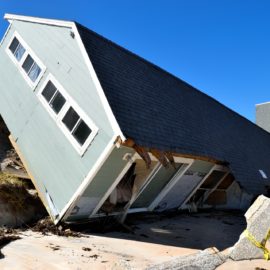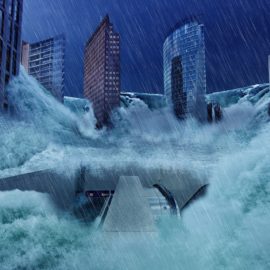
Who says republicans and democrats cant work together. Our two local house delegates got together to blast FEMA and the new flood insurance rates.
FEMA is at it again. On April 1, the agency rolled out a massive overhaul of premium rates for existing National Flood Insurance Program policyholders. What does this mean for Louisiana? By FEMA’s own admission, 80% of Louisiana’s NFIP policyholders will see rate increases in their flood insurance plans. This is unacceptable, unfair and flat-out bad policy. Risk Rating 2.0, as it is called, has been touted by FEMA as equitable, yet it will make flood insurance unaffordable while increasing the number of uninsured properties, creating uncertainty for homeowners and putting taxpayers at risk. In Louisiana, families and communities are unfortunately all too familiar with disasters. What’s unequitable is to force Louisiana families, who know that carrying flood insurance is the smart thing to do, to forgo coverage because they simply can’t afford this additional squeeze on their budgets. FEMA should structure NFIP to encourage participation in its insurance program instead of pricing homeowners out of the market.
theadvocate.com
Recently there have been articles citing real cases of increases and in each case no one knows why or how they have gone up.
Just in the last few weeks since Risk Rating 2.0 came into effect for existing policyholders, we have heard from families in Louisiana who are facing dramatic, unsustainable and unexplained premium increases. Unfortunately, these reports seem to be confirmed by a secret internal financial model conducted by FEMA that estimates 20% of policyholders would drop their NFIP coverage under Risk Rating 2.0. To this day, the findings of this modeling remain under wraps. If hardworking people’s lives are going to be thrown into chaos in their very homes, they certainly deserve transparency. With 80% of Louisiana policyholders and 77% of NFIP policyholders nationwide facing premium increases under Risk Rating 2.0, it is unacceptable that there is still insufficient information on how flood insurance costs are calculated by FEMA under this new NFIP rating structure, despite communities’ best efforts to protect against future flooding.
Yes, Ida hit us but the investment in protective barriers stopped a lot of flooding that could have occurred without the barriers.
Hurricane Ida walloped many areas of southeastern Louisiana. But it also showed the importance of investments in mitigation and flood protection measures, which protected much of the New Orleans region from devastating flooding. Communities should be rewarded, not penalized, for taking lifesaving measures to protect their homes and businesses. And yet many questions and concerns raised by levee and home elevation experts are still going unanswered by FEMA. FEMA has stated it will “take up to 10 years for 90% of Louisiana policyholders who experience an increase to reach their full risk rates.” This means that it will take a decade of 18% increases per year for over 355,000 Louisiana families to reach their full “actuarial rate,” which will mean huge price increases for many. But it also means that in 2032 there will still be close to 40,000 policyholders who are seeing yearly increases in their policies with no end in sight.
We should not be held hostage for a program even FEMA can’t explain.
We believe that families in Louisiana and across our nation should not be kept in the dark and left holding the bill for FEMA’s poorly designed Risk Rating 2.0. As the sole provider of flood insurance for most families and small businesses in our country, NFIP should not operate behind a smokescreen. Louisiana families and all American families deserve real, long-term solutions that will give certainty and peace of mind to homeowners. While there are many parts of NFIP that need reform, the biggest and most urgent challenge we face is to ensure the program remains affordable and stable in the future, while limiting the financial exposure to taxpayers. FEMA must take immediate action to adjust or pause its rollout of Risk Rating 2.0. We are committed to working in Congress to pursue a long-term reform and reauthorization of NFIP that keeps flood insurance affordable for policyholders regardless of geographic location. FEMA has a responsibility to take remediating action and provide answers to the 5 million policyholders who depend on the program for flood coverage. The people of Louisiana and policyholders nationwide deserve better.
So speak U.S. Rep. Steve Scalise and U.S. Rep. Troy Carter. Who says they can’t talk and work together?



